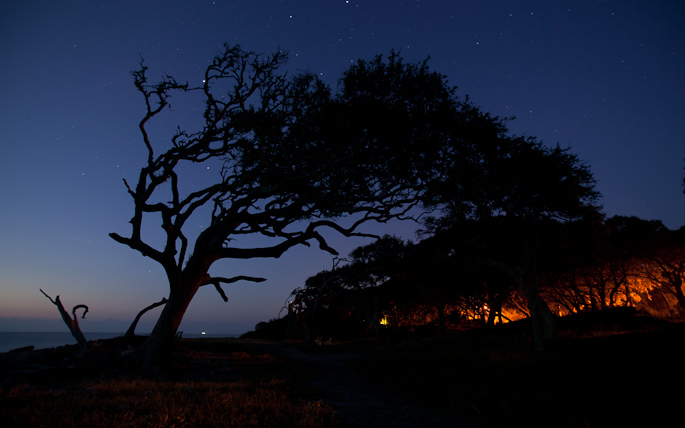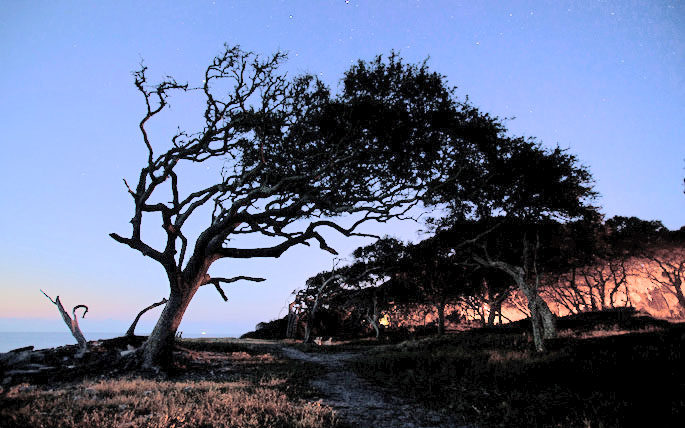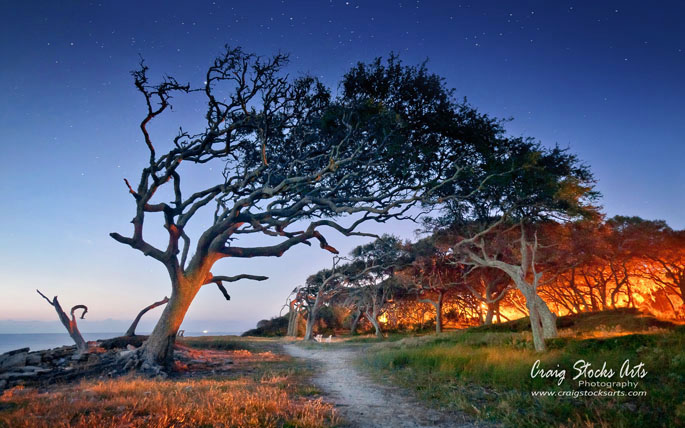Craig Stocks Arts Fine Art Photography and Artwork Duplication Services in Peoria and Central Illinois
November 9, 2010
In the world of photography, there are three topics sure to start an argument: Canon versus Nikon, PC versus Mac and raw versus JPEG. My personal view is that the first two sets of alternatives are meaningless arguments - choose whichever brand you like, for whatever reason seems important to you - and then go focus on doing good work with it.
The third set of alternatives is a different matter. There are real differences between shooting in raw mode versus JPEG mode. My goal in this tutorial is to educate you about some of the differences so that you can make the choice that best fits you needs. If you're not currently using raw mode, I'd like you to learn more about it so that you can decide if it's right for you.
What are raw and JPEG modes?
JPEG actually refers to a file format used for photos. It is by far the most commonly used format, and nearly every photo you see on the internet is a JPEG photo. A key advantage of JPEGs is that the image is compressed to fit into a smaller file size, but the compression reduces quality. The creator can choose the level of quality versus size, higher quality choices result in a larger file size.
Most higher-end digital cameras can be set to shoot in one of two modes, raw or JPEG. By default, they come from the factory set to JPEG mode. If you're using your camera in fully automatic mode (usually marked with an A or a green square) then JPEG mode is your only choice. But if you're serious about taking better photos, you should consider switching to raw mode. If you take hundreds of photos so that you can select just a couple of the best to print, then you should be looking at raw mode too.
So, what is raw mode? When your camera captures an exposure, the light hitting the sensor's photo sites creates an electrical signal proportional to the amount of red, green and blue color at each pixel location. That electrical signal is then processed through and analog-to-digital converter into a number the represents the strength of the signal. If you have a 10 megapixel camera, there are 10 million sets of red, green and blue photosites. At this point in the process, it's not a picture, it's just a bunch of data that can be processed into a digital photographic file.
If your camera is set to JPEG mode, then the camera will continue processing the raw data to turn it into a finished image. It will apply it's own demozaicing algorithm to translate the photo site data into pixel data, it will apply a white point setting to determine the overall color of your image, it will choose a color space to define colors, and it will scale or transform as needed to fit the color information from the raw data into it's internal color space*. It will also reduce the number of colors, or shades of gray, to fit into the JPEG file format specification**.
* The color space defines the limits of each color, generally referred to as the color gamut. The larger the color space, the more colors are available. Among the most commonly used color spaces, Adobe sRGB is the smallest and Prophoto RGB is the largest. Nearly all JPEGs are stored using the sRGB color space.
** The number of increments of a color are determined by its bit depth. The more bits available to describe each color, the more precise the color. Most DSLR cameras today will capture 12 or 14 bits of data, which allows each color to have 4,096 or 16,384 distinct levels. JPEG files are limited to 8 bits of data for each color, which only allows 256 distinct levels for each color.
If you have set your camera to save the raw image data, that's exactly what it does. Rather than continuing to process the image into a finished JPEG using the built in computer and software, your camera will simply save the raw data into a special file format on your memory card. Of course, the data still needs to be processed into a finished image, so you will need to load the raw data onto your computer and use appropriate software to transform the data into an image.
So to summarize, all cameras have sensors that capture raw data. And all finished images are created by further processing the raw data. Your choice is whether to have the camera's built in computer do the processing, or wait and do the processing on your computer at some later time.
Which workflow is right for you? In simple terms, a JPEG workflow requires fewer steps, less software (maybe) and allows the camera to shoot more quickly. A raw workflow will yield the best quality results, and much more flexibility to adjust the brightness and color. If you want the highest possible quality, you should consider using shooting in raw mode.
What is the advantage of raw mode?
First, a quick example of the advantage of working with a raw file. The photo below shows the original photo as captured by the camera. It was captured at ISO 200 with the lens wide open at f-2.8 for 30 seconds.The photo is obviously too dark. This was with a 2002 vintage digital camera, so if I'd set the ISO higher than 200 I would have had too much noise in the photo. If I'd used a longer exposure, the stars would have appeared as streaks rather than points.So I was pretty much stuck with a photo that was too dark. If the camera had been set JPEG mode, this is what I would have had as a starting point in Photoshop.

Of course, I could lighten it in Photoshop, as shown below. But many of the dark areas would be recorded in the JPEG as solid black. I could lighten the black to gray, but I couldn't add details that just weren't there.

Now, look at the photo below that shows the result of processing the image as a raw file rather than as a JPEG. There was actually lots of color and detail information contained in the raw data, but it was lost when the raw data was converted into the JPEG format. Since I had the raw data available to me, I was able to work from the much richer set of data to bring out all of the details that was there.

This is just one example to show how much more flexibility you have when working with a raw file instead of a JPEG. There are a number of other areas where shooting raw gives you much more control over your finished image.
What's needed to use raw mode?
The good news is that you probably have software to convert a raw image into a finished JPEG. Cameras that can shoot in raw mode come with software. Canon cameras come with Digital Photo Professional, and Nikon cameras come with View NX. The bad news is that it isn't very good software. The conversion is fine, but the interface and overall usability isn't very good.
The most commonly used software comes from Adobe. The least expensive is Photoshop Elements, which you can easily find for less than $100. Like its full featured sibling, Photoshop CS5, it comes with the Adobe Camera Raw plugin which is used to convert your raw image before loading it into Photoshop. If you have a version of Photoshop, you already have the ACR plugin. But, if your camera is newer than your copy of Photoshop, ACR may not be able to read your camera's file format. Unfortunately, each manufacturer, and in fact, each camera, use a slightly different file format. As new cameras come to market, Adobe releases updated versions of ACR to handle the new cameras.
Another good option is Adobe Photoshop Lightroom, normally just referred to as Lightroom. If you take lots of photos, Lightroom is probably worth the price just for it's image catalog capabilities. The catalog can handle a wide variety of formats, including JPEG, raw and even video. Lightroom has the exact same raw processing features as ACR, but also includes very robust image catalog management tools along with modules to create slideshows and web galleries as well as a module for printing. Since you can freely mix raw and JPEG images in your Lightroom catalog, you can easily combine your older JPEGs with newer raw files and Lightroom can handle it.
A frequent question is, "If I buy Lightroom, do I still need Photoshop?" The answer depends on what you want to do with your images. Photoshop is a much more powerful tool, but it also takes longer to learn. I find that most photos that will be printed 8X10 or smaller rarely need the power of Photoshop, so I can do everything in Lightroom. But, when I'm going to print larger than 8X10, I nearly always also use Photoshop. So, it really depends on how much you want to adjust or manipulate your image.
One word of warning. By default, most digital cameras do a lot of post processing to make the photo look good to the average person. That normally includes a significant boost in both contrast and color saturation. The camera also applies quite a bit of sharpening. When you first look at a raw image, you may initially be worried since the image will look flat, dull and maybe even less sharp. But, that's actually an advantage since you can then decide how much contrast, saturation and sharpening each image really needs, and it won't be the same for every photo you take..
So, there you have it. If you enjoy getting the best image you can out of your photos, then you'll want to explore shooting in raw mode. It's a little more effort, but the payoff is better results.
If you'd like to learn more, I offer one-on-one training in a wide variety photography and Photoshop topics. You can also find loads of information and tutorials on the internet, especitally at sites like the National Association of Photoshop Professionals. I also like the free tutorials offered by Mark Johnson, especially his Photoshop 101 series.